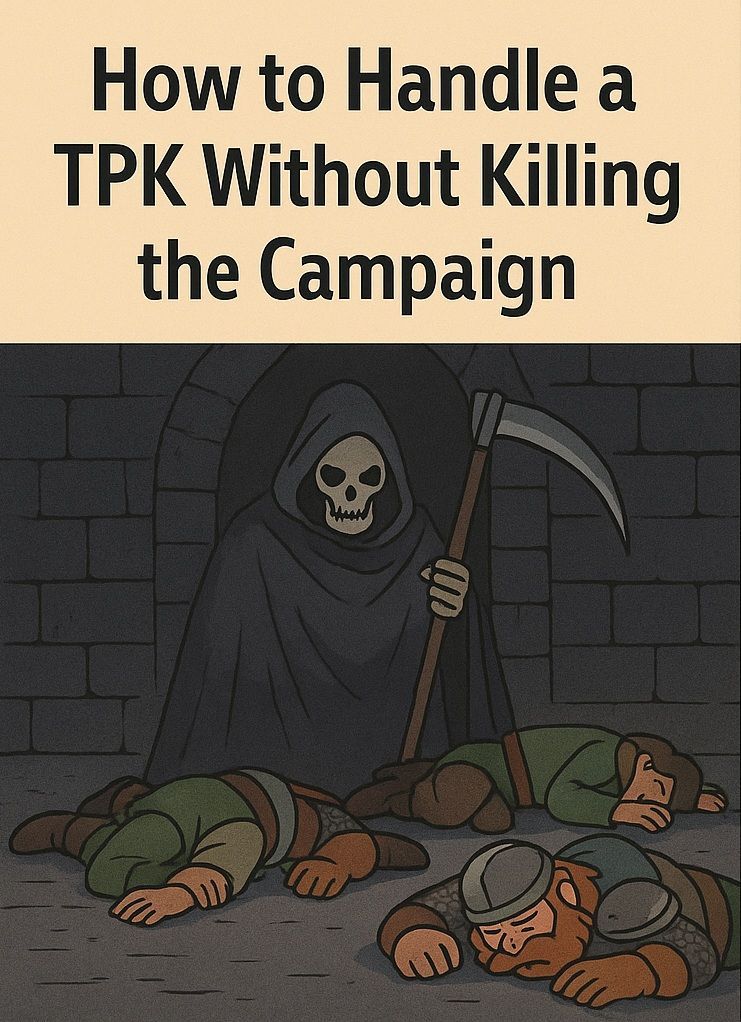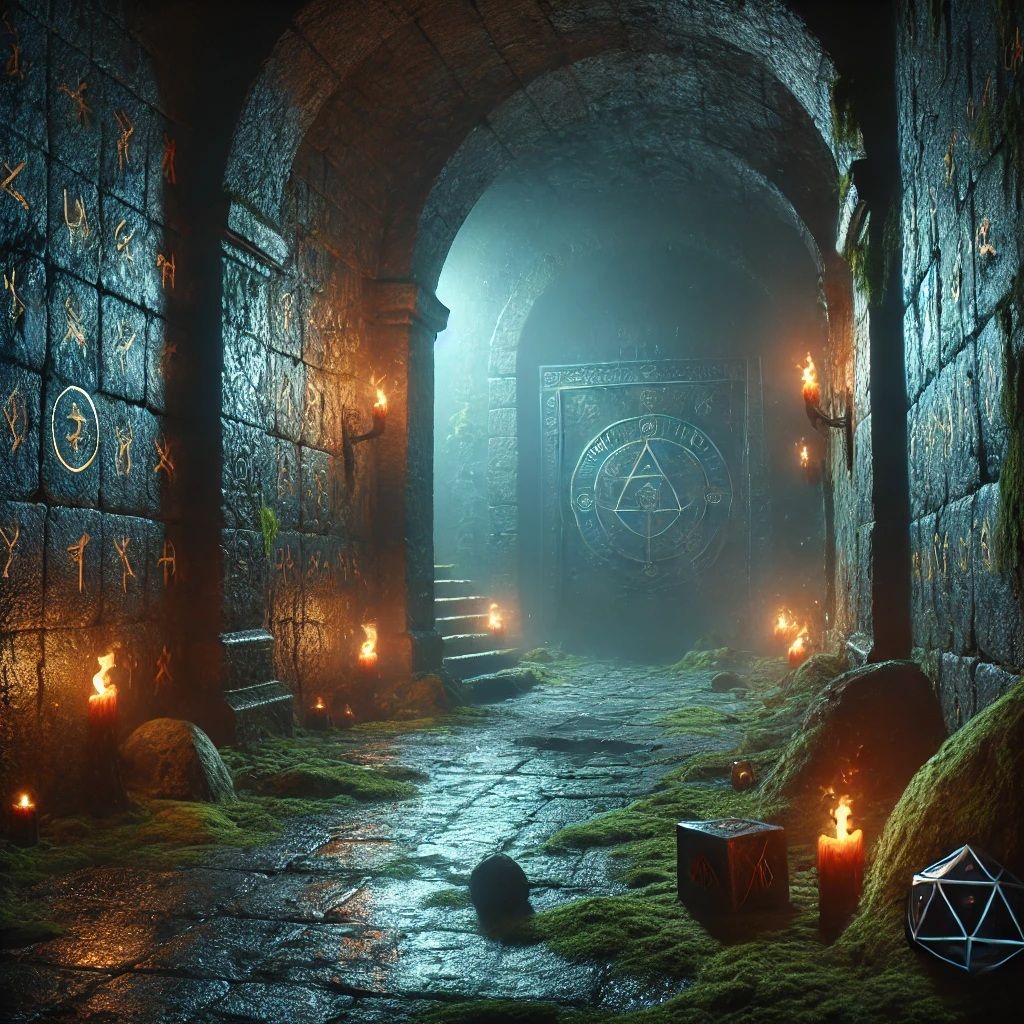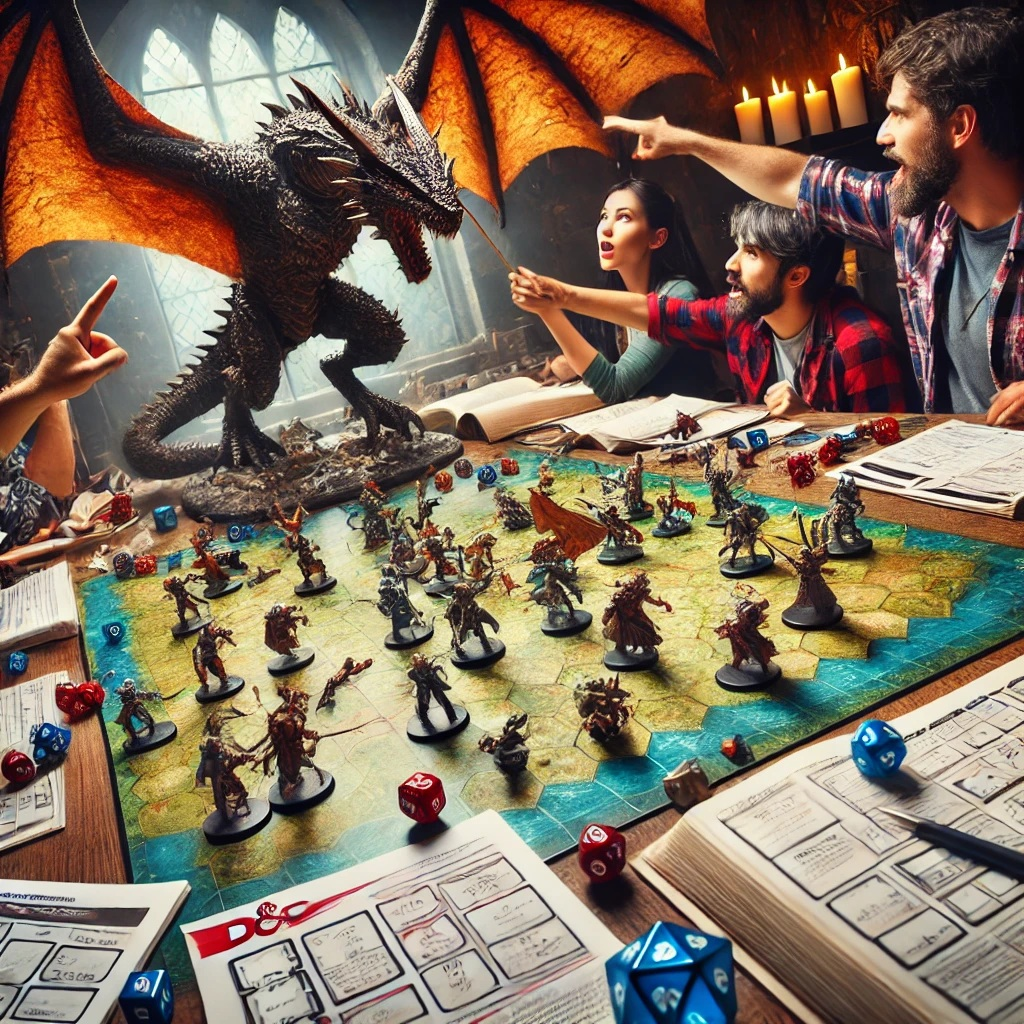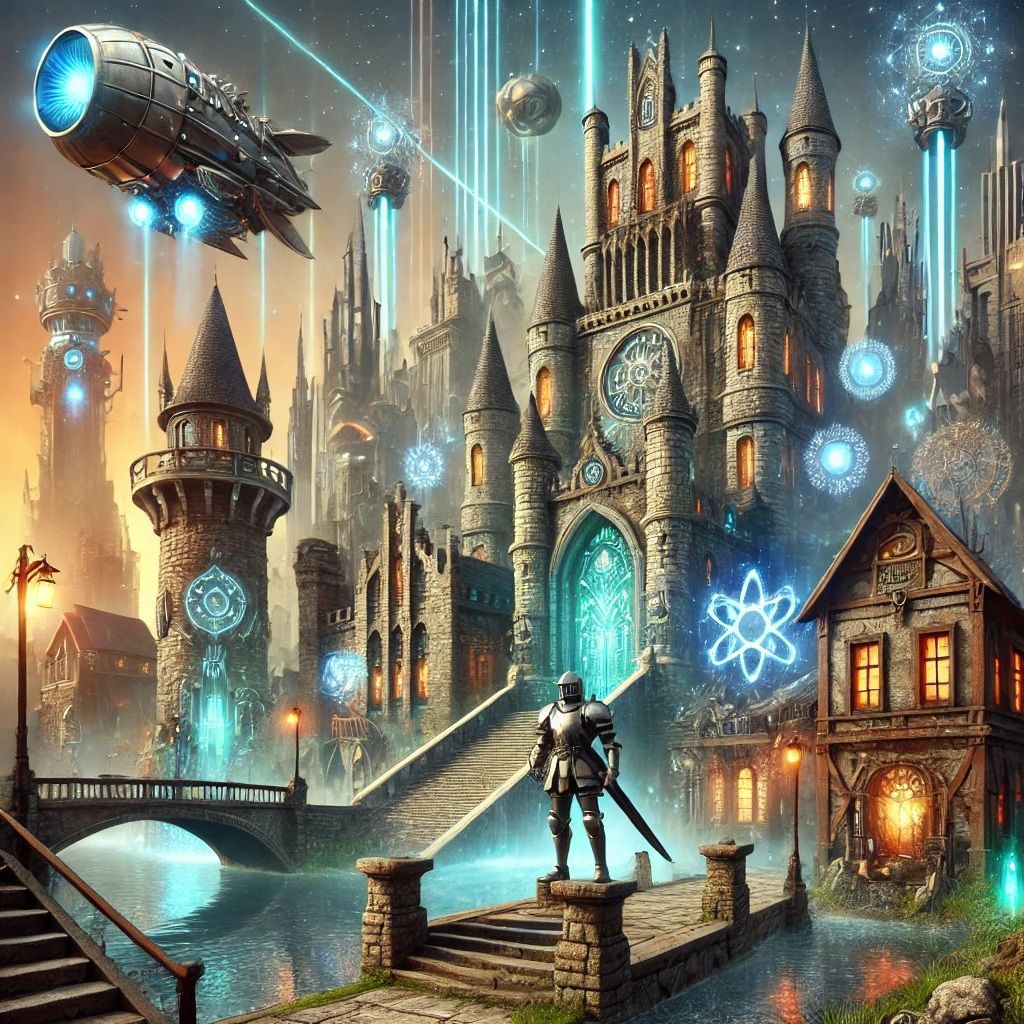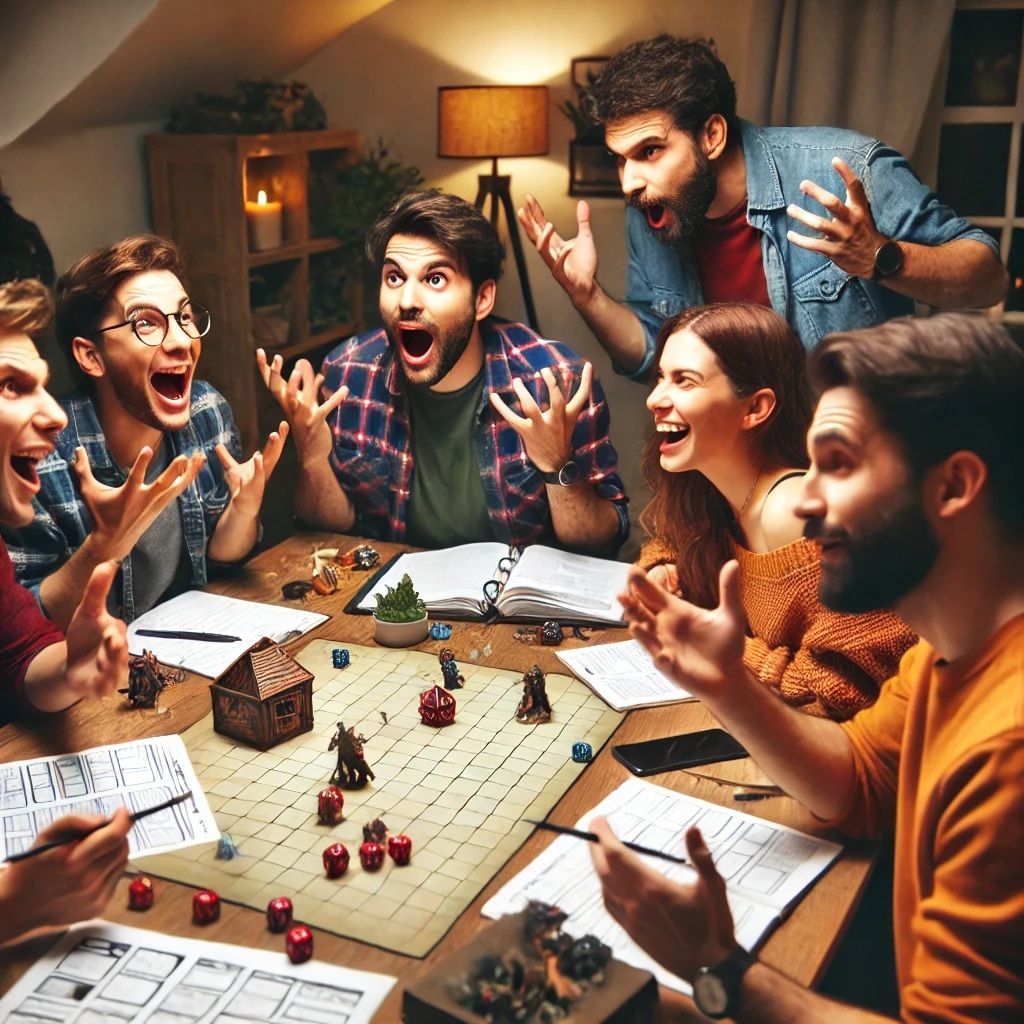The Morality and Choices of D&D: Weaving Ethics Into Your Campaign
The Morality and Choices of D&D: Weaving Ethics Into Your Campaign

Dear Readers,
Dungeons & Dragons (D&D) is not merely a game of dice rolls, combat encounters, and fantastical exploration. It is a playground of imagination, a canvas for storytelling, and most importantly, a stage for exploring moral and ethical dilemmas. Whether you're a Dungeon Master (DM) crafting a complex narrative or a player navigating your character's choices, morality is an essential thread that can deepen the experience of your campaign.
In this post, we’ll examine the role of morality in D&D, how choices shape both narrative and character development, and ways to introduce ethical dilemmas into your campaigns. By the end, you'll have tools to make your sessions more impactful, thought-provoking, and unforgettable.
The Intersection of Morality and Roleplay
At its core, D&D invites players to step into the shoes of their characters, embodying their beliefs, motivations, and flaws. Morality often serves as a mirror in this roleplay, reflecting not only the character's values but sometimes the player's own.
Roleplay as Ethical Exploration
Playing D&D allows players to wrestle with questions they might not face in their everyday lives. For example:
- What would I do if I had the power to change someone’s fate?
- How far would I go to achieve a goal if it means hurting others?
- What does justice look like in a world without modern systems of accountability?
These scenarios create moments of introspection and collaborative storytelling. A paladin's oath, a warlock's pact, or a rogue's shady deal can serve as a lens through which morality is explored.
Creating Moral Dilemmas as a DM
Moral dilemmas are a DM's secret weapon for weaving depth into a campaign. They challenge players to make tough decisions and often leave lasting consequences that ripple through the story.
What Makes a Good Moral Dilemma?
A compelling moral dilemma includes the following:
- Two (or More) Viable Choices: The decision shouldn't have a clear right or wrong answer. Both options should feel valid but flawed.
- Stakes: There must be consequences to the decision. Whether personal, political, or world-changing, players should feel the weight of their choice.
- Gray Areas: Avoid making one option clearly "good" and the other "evil." Ethical ambiguity fosters debate and introspection.
For example:
- The Hostage’s Dilemma: A villain offers the party a choice: save a group of hostages or allow the villain to escape. Which is more important—justice or the lives of innocents?
- The Corrupt Ally: The party learns a trusted ally has committed terrible crimes in the past. Do they expose the ally and risk destabilizing a region or cover up the truth for the greater good?
Practical Tips for Building Moral Dilemmas
- Use NPCs Players Care About: Introduce dilemmas involving characters the players have formed bonds with, making the decision feel personal.
- Align the Dilemma with Player Goals: If the party seeks to protect a kingdom, present a choice that threatens its stability. This ensures the stakes resonate.
- Build on Past Decisions: Let earlier choices resurface in unexpected ways, showing players that their actions shape the world.
The Impact of Choices on the Narrative
Choices are the lifeblood of a D&D campaign. Each decision players make has the potential to change the course of the story, creating a dynamic and immersive experience.
Consequences: The DM’s Response
When players make a choice, the DM’s job is to reflect the outcome in the world. This gives weight to their decisions and encourages thoughtful play. Consequences can be immediate or long-term, personal or far-reaching.
Examples of Consequences
- Immediate: After sparing a defeated enemy, the party faces an ambush from that same foe.
- Long-Term: Choosing to ally with a faction could lead to political repercussions, alliances, or betrayals down the line.
- World-Building: If the players spare a forest from destruction, it might thrive and become a safe haven—or it could harbor unforeseen dangers.
The Butterfly Effect
Small choices can lead to significant changes, a concept often referred to as the butterfly effect. For example:
- Refusing to aid a farmer during a side quest might result in a famine that destabilizes a region.
- A seemingly minor theft in a town could ignite an investigation that later entangles the players in a larger conflict.
Encourage your players to think critically about their actions and their ripple effects. This enhances immersion and reinforces the idea that their characters truly shape the world.
Player Morality and Group Dynamics
D&D is a collaborative game, but moral conflicts among party members can add layers of complexity and intrigue to the story. Balancing these dynamics requires careful handling by both players and the DM.
When Morality Clashes in the Party
Differing moral alignments or values often lead to internal debates, which can be a source of rich roleplay. For example:
- A lawful good paladin might clash with a chaotic neutral rogue over methods.
- A druid’s commitment to nature might oppose a wizard’s pursuit of knowledge through experimentation.
Guidelines for Managing Conflict
- Respect the Players, Not Just the Characters: Ensure debates remain in-character and do not bleed into real-life arguments.
- Focus on Roleplay, Not Winning: Encourage players to see these conflicts as storytelling opportunities, not contests of logic or dominance.
- Find Common Ground: Remind players that despite differences, their characters share overarching goals, such as defeating a common enemy.
Moral Alignment: Tool or Trap?
The D&D alignment system (e.g., lawful good, chaotic neutral) is a classic framework for understanding morality, but it can also feel restrictive or oversimplified.
Using Alignment as a Guide
- Character Backstory: Use alignment to help define a character’s motivations and values.
- Guiding Decisions: Alignment can serve as a moral compass, helping players make decisions in line with their character’s ethos.
Breaking Free of Alignment
Many modern campaigns treat alignment as fluid, allowing characters to evolve based on their choices. For example:
- A neutral character might shift toward good after witnessing the horrors of evil firsthand.
- A lawful good character might adopt more pragmatic (and chaotic) methods after facing corruption in a governing system.
Encourage players to view alignment as a starting point, not a rigid box. Real moral complexity often lies beyond these categories.
Themes of Morality to Explore in Your Campaign
To inspire your storytelling, here are some overarching themes of morality and how they can be woven into your campaign:
1. Justice vs. Mercy
Players often grapple with whether to administer harsh justice or show compassion. This theme is particularly potent when dealing with villains or morally ambiguous NPCs.
Example Scenario: The party captures a bandit leader who terrorized a village. The villagers demand execution, but the bandit reveals they were forced into crime by a corrupt noble. What should the party do?
2. Power and Corruption
The allure of power and the risk of corruption create fascinating moral dilemmas. How much power is too much, and at what cost?
Example Scenario: An artifact grants its wielder immense power but corrupts their soul with prolonged use. Will the party wield it to save the world or destroy it to prevent potential catastrophe?
3. Sacrifice and the Greater Good
The theme of sacrifice challenges players to weigh the needs of the many against the needs of the few.
Example Scenario: A city can be saved from a volcanic eruption, but only if an ancient forest (and its inhabitants) is destroyed to fuel a protective ritual. What choice will the party make?
Bringing Moral Choices to Life: Practical DM Tips
Making morality a central part of your campaign requires finesse and preparation. Here are some practical strategies for creating meaningful moral choices:
1. Know Your Players
Understand the kinds of stories your players enjoy. If they relish philosophical debates, lean into complex ethical quandaries. If they prefer action, frame moral dilemmas in high-stakes encounters.
2. Give Choices Time to Breathe
Avoid forcing players to make snap decisions. Give them time to deliberate, debate, and explore the consequences.
3. Avoid Punishing a Single Perspective
Every choice should have consequences, but none should feel like a punishment for "choosing wrong." Instead, ensure each decision carries both benefits and drawbacks.
4. Use Visual and Narrative Cues
Describe the world in a way that emphasizes the moral stakes. For instance, if the party is deciding whether to ally with a dubious faction, show the desperation of the faction's followers or the devastation caused by their enemies.
Evolving Morality Over the Campaign
One of the most rewarding aspects of D&D is seeing characters and the world evolve. Morality is a dynamic force, not a static one, and should grow alongside the story.
Character Growth
Players love seeing their characters grow in response to the challenges they face. Let their choices shape their development:
- A selfish rogue might learn to care for others after saving an orphanage.
- A righteous paladin might grapple with doubts after witnessing the cost of their unwavering ideals.
World-Building
Reflect the players’ choices in the world around them. If they choose mercy, show how that act inspires others—or leads to unforeseen consequences. If they choose power, let them see how it shapes the political and social landscape.
Morality in One-Shots vs. Campaigns
While long-term campaigns allow for deep exploration of morality, one-shots can also deliver impactful ethical dilemmas. In one-shots, focus on:
- Immediate Stakes: Keep the choices tight and impactful, with consequences that unfold quickly.
- Dramatic Setups: Start with a clear moral quandary, like protecting a town or stopping an invasion.
Conclusion
Morality and choices are the heart of compelling D&D campaigns. They challenge players to think critically, invest emotionally, and engage deeply with the narrative. As both a DM and a player, weaving ethical dilemmas into your game can transform a fun session into an unforgettable story.
The next time you sit down at the table, consider how morality can enhance your campaign. Introduce tough choices, explore the gray areas of ethics, and watch as your game blossoms into a rich tapestry of storytelling.
Until next time, Dear Readers...















